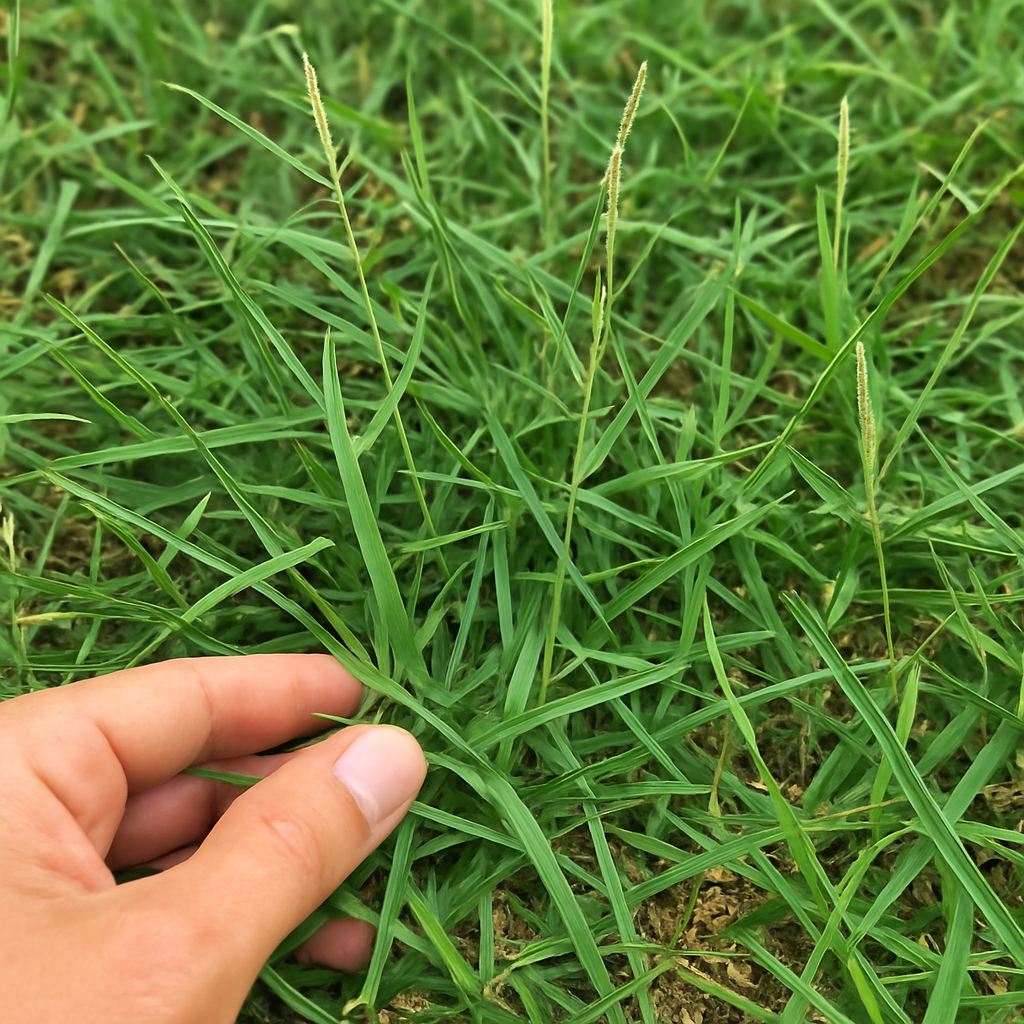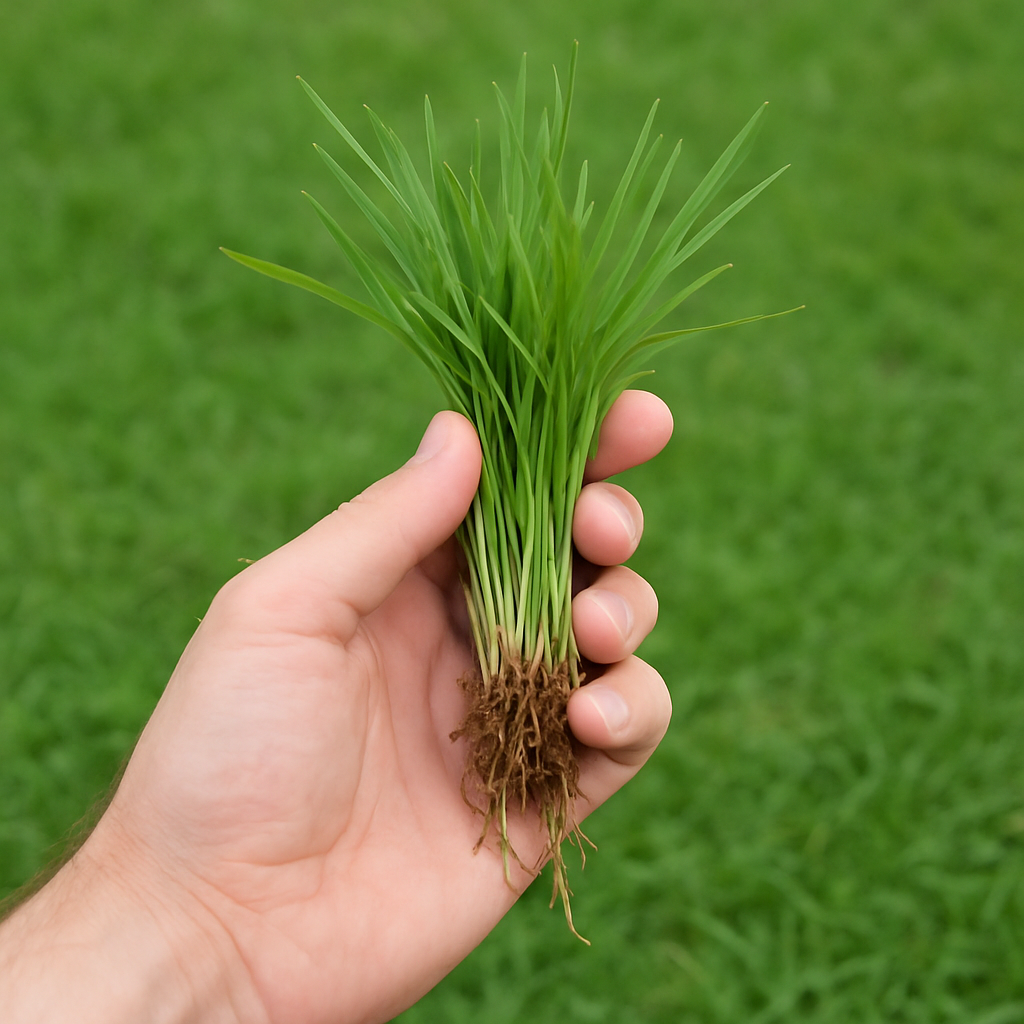Ask Ayurvedic doctor a question and get a consultation online on the problem of your concern in a free or paid mode. More than 2,000 experienced doctors work and wait for your questions on our site and help users to solve their health problems every day.
Shop Now in Our Store
What Is Durva Grass: Identification, Meaning, and Benefits

Ever wondered what is durva grass and why it's so revered in Indian culture and Ayurveda? Whether you’ve stumbled upon it during a ritual or heard about its healing powers, durva (sometimes spelled doob) is more than just a common weed—it’s a sacred plant loaded with health and spiritual significance. People often ask how to identify durva grass, or they’re curious about the durva meaning, both spiritually and medicinally. In this article, we’ll explore not just the durva plant itself but also its practical uses, healing properties, and how to recognize it in the wild.
We’ll cover everything from the origins of the term durva, to its physical characteristics and health benefits. And don't worry—we’ll make it conversational, easy-to-understand, and peppered with little quirks that make it feel truly human. Let's dive in.
What Is Durva Grass and What Does Durva Mean
Durva grass, scientifically known as Cynodon dactylon, is a fast-growing, mat-forming perennial plant commonly found in tropical and subtropical regions. While it might seem like just another patch of lawn grass to the untrained eye, its importance runs much deeper in Indian tradition. Durva has long been used in Hindu rituals, traditional medicine, and even natural skincare.
So, what is durva grass really? Think of it as nature's humble healer. With deep roots in Ayurveda and spiritual practices, this plant has gained attention not only for its symbolic value but for its array of practical benefits too.
Meaning of Durva in Sanskrit and Ayurveda
The durva meaning comes from Sanskrit. The word is believed to be a combination of duh (meaning "that which is difficult") and vra (meaning "to remove" or "to eliminate"). That’s poetic, isn’t it? It basically means “that which eliminates difficulties.” This aligns beautifully with the belief that the plant has the power to cleanse, heal, and purify—both physically and spiritually.
In Ayurveda, the durva plant is prized for its cooling nature. It balances the Pitta dosha (the energy of fire and metabolism) and is often used to treat skin conditions, inflammation, and bleeding issues. The fact that something so tiny and common can have such powerful properties is kinda mind-blowing.

How to Identify Durva Grass and Recognize Its Features
Okay, so how do you know if what you're looking at is durva grass? That’s a good question because a lot of grasses out there look pretty similar if you're not paying close attention.
Durva grass typically grows low to the ground and spreads quickly, forming a dense green carpet. It loves warm, sunny environments and is often found in gardens, open fields, and even cracks in sidewalks (yeah, it's that persistent). It's one of those plants that just doesn’t give up easily.
Visual Characteristics of Durva Leaves and Seeds
The durva leaves are slender, flat, and usually about 2–15 cm long. They taper to a fine point, and if you touch them, they feel smooth on top but a bit rough underneath. The color is a vibrant green, although it can turn a bit dull in dry conditions.
Now, when it comes to durva grass seeds, they’re teeny-tiny, oblong, and pale brown or grayish in color. You won’t spot them easily unless you get down real close. They're usually harvested when the grass matures and are used to propagate the plant or in herbal preparations.
Sometimes people confuse it with Bermuda grass (which it is, actually, in a botanical sense), but culturally, when someone says durva, they’re often referring to the specific grass used in pujas and traditional medicine.

Durva Grass Benefits and Traditional Uses in Ayurveda
Alright, now that we’ve covered what is durva grass, its meaning, and how to spot it, let’s talk about why it’s so valued. Spoiler alert: the durva grass benefits go way beyond folklore. This isn’t just something your grandma swears by (though she’s probably right)—modern herbalists and Ayurvedic practitioners use it, too.
Durva is cooling, anti-inflammatory, mildly astringent, and surprisingly potent despite its ordinary appearance. From minor cuts to major doshic imbalances, this little plant has a laundry list of uses that might just make you want to grow it in your backyard. (Not joking, people actually do!)
Benefits of Durva Grass for Skin, Pitta, and Wound Healing
Let’s start with the skin—because honestly, who doesn’t want clearer, healthier skin without breaking the bank? One of the key benefits of durva grass is its natural ability to calm irritation. Its juice is often applied to rashes, eczema patches, or burns to reduce redness and promote healing. It’s gentle yet effective, making it great even for sensitive types (skin types, not people—though who knows?).
In Ayurveda, durva grass is often recommended for pacifying aggravated Pitta. Pitta governs heat, digestion, and transformation in the body, and when it’s out of balance, you get issues like acne, ulcers, inflammation—basically all things “hot.” Durva’s cooling nature is like a mini fire extinguisher for your body. Feeling overheated, inside or out? A durva paste or juice can help.
But here’s something super practical: if you’ve ever had a small cut or wound, durva juice can actually help stop the bleeding. Yep. The plant has hemostatic properties, meaning it can clot blood and close up wounds faster. That’s not just old wives’ tales; even modern studies back this up to some extent.
Uses of Durva Leaves and Seeds in Remedies
So, what do people actually do with durva leaves and durva grass seeds? Well, the leaves are most commonly used fresh. You can crush them into a paste or juice them to create a powerful topical or ingestible remedy. For example, durva juice is sometimes taken with honey to improve digestion or as a gentle detox.
Durva grass seeds, while less commonly used than the leaves, do have their place. They’re used in some traditional herbal formulas to support fertility, especially in women, and may even help in regulating menstrual cycles. They’re also sometimes ground into a powder and mixed into drinks or decoctions.
And here’s a fun fact: in some regions, durva leaves are offered in Hindu pujas to Lord Ganesha, symbolizing resilience and long life. It’s not just about worship—it’s about recognizing the inherent power of natural remedies. The line between ritual and remedy is blurry, and durva sits right in the middle of it.
Of course, not everyone uses it the same way. Regional traditions vary, and some folks even brew it into teas or use it in skin tonics. Just make sure you’re using clean, pesticide-free grass—especially if you're ingesting it. Safety first, right?
Conclusion
By now, you should have a pretty solid idea of what is durva grass, how to identify durva grass, and why it's earned such a respected spot in Ayurveda and Hindu traditions. From its soothing touch on inflamed skin to its spiritual role in sacred ceremonies, the durva plant is truly one of those under-the-radar treasures we often overlook.
And look—it’s not some exotic herb that’s hard to find or pronounce. It grows in parks, backyards, and cracks in sidewalks. That accessibility makes its power even more impressive, don't you think? Nature gave us this gift in plain sight, and all we needed to do was look down.
Whether you’re looking to heal a wound, cool an overheated system, or just reconnect with natural wellness, durva might be your new favorite plant ally. It’s not flashy, but it sure is mighty.
Final thought? Don't underestimate the small stuff. Sometimes, the humble patch of green you pass on your morning walk is packed with centuries of wisdom, healing, and resilience.
FAQs
What are the benefits of durva grass for skin or healing wounds?
Durva grass benefits the skin in a number of ways. It helps soothe rashes, reduce inflammation, and promote faster wound healing. The juice from durva leaves is often applied directly to the skin for minor burns, eczema, or bleeding cuts. Thanks to its cooling and antimicrobial properties, it’s especially useful for calming Pitta-related skin issues.
How are durva grass seeds and leaves used in Ayurvedic remedies?
Durva leaves are typically crushed or juiced for use in Ayurvedic preparations. You can apply the paste externally for wounds or drink the juice (with honey or water) to cleanse the digestive system or cool down internal heat. Durva grass seeds are less commonly used but sometimes ground into powders and added to herbal blends for supporting fertility or regulating the menstrual cycle.
Just a heads-up, tho: make sure you’re using durva from a clean, pesticide-free area if you're planning to ingest it. Nobody wants grass plus toxins, right?
Is durva plant safe for home use or internal consumption?
Generally speaking, yes—durva plant is safe for both external and internal use when used appropriately. But like with any herb or plant, moderation is key. If you're unsure, or if you have allergies or medical conditions, it's always a good idea to consult with an Ayurvedic practitioner or a healthcare provider first.
Oh, and pregnant women should avoid consuming durva without medical advice. Better to be safe than sorry, especially when dealing with natural medicines.
Curious to experience the benefits of durva grass for yourself? Next time you see that little patch of green poking up from the ground, don’t just walk past it—pick a leaf, try a juice, or simply appreciate its ancient wisdom. If you found this article helpful, why not share it with someone who could use a bit of natural healing in their life?
Got your own experience with durva grass? Drop a comment or tag us on social—we’d love to hear how you use this incredible plant in your daily routine 🌿
This article is checked by the current qualified Dr Sujal Patil and can be considered a reliable source of information for users of the site.

